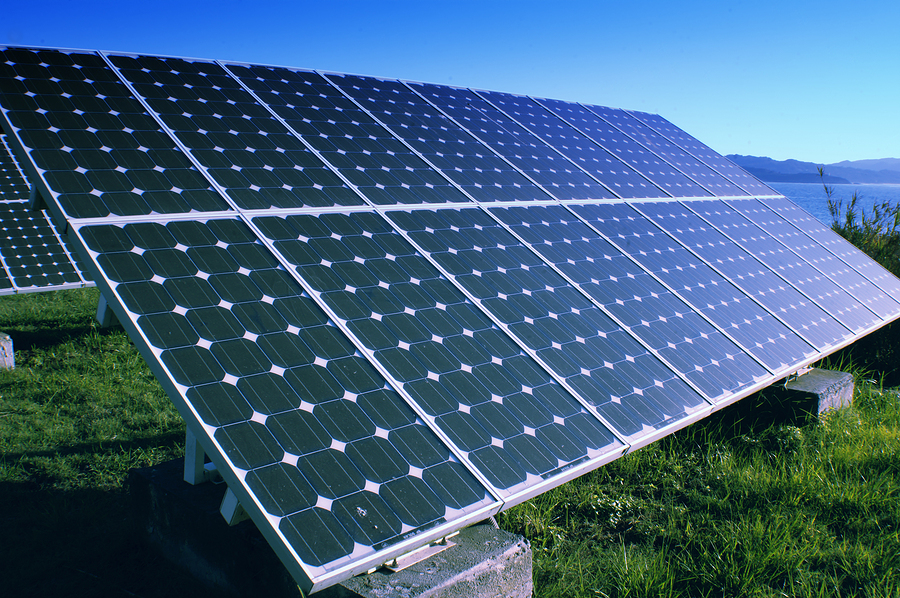Our planet has provided us with so much, that we sometimes forget that it can’t last forever. We take more than we give, and we are beginning to see the consequences right before our eyes. Thankfully, many are taking steps to try and reduce their carbon footprint. It can be as small as recycling properly, to choosing alternative energy sources over dangerous fossil fuels.
RELATED ARTICLE:
But just how easy is it to actually make these changes? One man from Prince Edward Island found out the hard way. After spending $46,000 to install solar panels and not rely on the power grid, he is still being taxed for energy he produces himself!
Renewable Energy – The Options
In recent years, electric cars have gone from the butt of jokes about extension cords to luxury vehicles and real, viable options. But if it’s your home that you’re concerned with, you can consider a few different options you have to transform your home to make use of the Earth’s renewable resources and supplement your energy needs or completely take you off the grid.
You can consider taking advantage of the Earth’s geo-energy with a ground-source heat pump. It uses the Earth’s relatively steady temperature (as compared to the air) to heat and cool buildings. These pumps use as little as a quarter to half as much electricity as traditional systems, and can last 25 to 50 years, and you can expect to be paid back in energy savings in as little as 10 years!
RELATED ARTICLE:
You can also consider wind energy if your area is zoned to have wind turbines. The Department of Energy Efficiency and Renewable Energy suggests at least one acre of rural land–and a climate that affords a steady breeze.
One of the most popular forms of alternative energy for homes is solar energy. You can use either active or passive solar power. Active solar power is held in solar cells (also called photovoltaics), and can be stored for later or used immediately to provide heat or electricity – or to supplement a traditional heating or electrical system. Passive solar doesn’t use expensive solar cells, but still harnesses the power of the sun to heat your home in 3 ways: direct gain, which collects light through the windows; indirect gain, which stores thermal energy within the walls; and isolated gain, more commonly put to use in a solarium or sunroom situation.
While these methods can be expensive, the initial sacrifice can leads to much larger rewards in the future, especially for the planet. But this isn’t the only obstacle that needs to be overcome.
The Roadblocks
While things like the climate and location of where you live can make it difficult to have certain kinds of renewable energy, solar panels have become popular because they can be used almost anywhere. One man by the name of Kris Currie decided to build his home to be 100% self-sustaining and rely on solar energy. What he didn’t expect was to be charged tax on energy he generates himself.
Kris developed his house to be a net-zero home; it generates all the power it needs from the 35 solar panels on the roof. He pays nothing to Maritime Electric, the energy provider in Prince Edward Island, Canada (P.E.I.), but is still charged the HST (harmonized sales tax) on the energy he uses.
“It’s nonsense really. It should be exempt,” Currie said. “We’re using it for heat, for one. Oil’s exempt. Now that we’re producing electricity we’re getting charged for it.”
Kris is part of P.E.I.’s net metering program, which allows individual homeowners to generate their own electricity, sending any excess into the grid in exchange for credits so they do not have to pay when they draw electricity back out of the grid.
RELATED ARTICLE:
In April, Kris’ bill shows he paid $13.49 HST on the 644 kilowatt hours of electricity he used. In the winter, that price goes up to $50 or $60 a month. The provincial government and Maritime Electric both told CBC News that federal tax law requires HST be charged to homeowners involved in net metering.
Kris spent an extra $46,000, without government help, to build a net-zero home. He even paid HST on the solar panels and the labor to have them installed. He spent the extra money because he wanted to cut his monthly bills and reduce his family’s carbon footprint. But these added taxes means it will take longer for his investment to pay off.
While unfortunate for Kris and other solar energy users in P.E.I., most other governments are doing all they can to help those who choose to use solar energy. Other provinces in Ontario offer grants of up to $5000 to install solar panels and offer tax rebates on installation costs.
What About The U.S.?
When Congress passed the 2016 federal spending bill and extended the solar panel tax credit, they made it a lot easier and more rewarding for people to install solar panel systems in their homes.
The federal solar tax credit, also known as the investment tax credit (ITC), allows you to deduct 30 percent of the cost of installing a solar energy system from your federal taxes until 2019. The ITC applies to both residential and commercial systems, and there is no cap on its value. Here are the specifics of the extension of the ITC:
- 2016 – 2019: The tax credit remains at 30 percent of the cost of the system. This means that in 2017, you can still get a major discounted price for your solar panel system.
- 2020: Owners of new residential and commercial solar can deduct 26 percent of the cost of the system from their taxes.
- 2021: Owners of new residential and commercial solar can deduct 22 percent of the cost of the system from their taxes.
- 2022 onwards: Owners of new commercial solar energy systems can deduct 10 percent of the cost of the system from their taxes. There is no federal credit for residential solar energy systems.
There is still much that needs to be done before we can repair the damage done to the world by extracting and burning fossil fuels. Resistance to renewable sources of energy is usually brought up by those who are heavily invested in the old ways, but there are still those out there that can see through the smoke and understand that if we want to keep this planet healthy for generations to come, we need to start today.
SOURCES
- https://www.treehugger.com/htgg/how-to-go-green-alternative-energy.html
- http://www.cbc.ca/news/canada/prince-edward-island/pei-electricity-hst-solar-net-metering-1.413970
- http://news.energysage.com/congress-extends-the-solar-tax-credit/












